I tell stories about how technologies are never neutral, but sometimes seem so—usually right up to the point when we realize they've caused irreversible change. I analyze the hidden patterns that often unintentionally determine our social, political, and economic choices, and show why this means technological change is rarely as revolutionary as it seems. Below is a selection of articles and book chapters I've written--more recent work can be found on Google Scholar. If you're interested in my book, Programmed Inequality (MIT Press, 2017) visit the book's page, where you can read the full introduction (free) online.
-
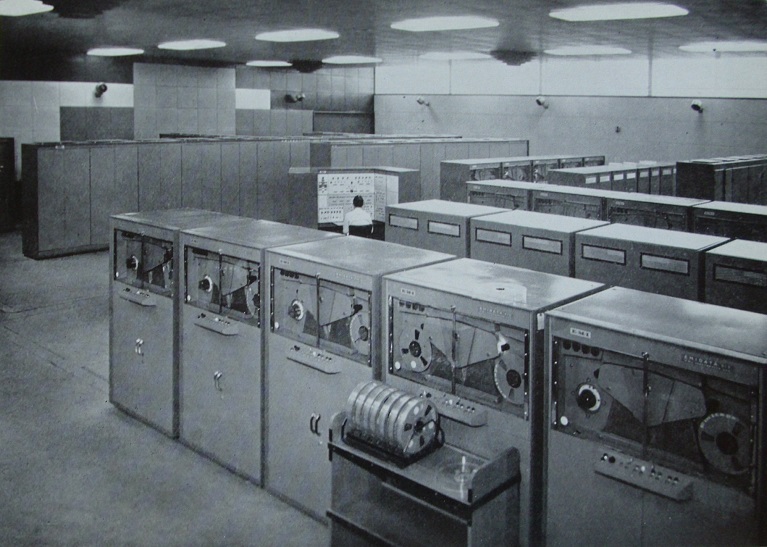 "Hacking the Cis-tem"
IEEE Annals of the History of Computing (March 2019)
"Hacking the Cis-tem"
IEEE Annals of the History of Computing (March 2019)
This paper looks at the case of transgender Britons who tried to correct the gender listed on their government-issued ID cards, but ran up against the British government's increasingly computerized methods for tracking, identifying, and defining citizens. These newly computerizing systems show some of the earliest examples of transphobic algorithmic bias: explicit attempts to program trans people out of the system can be seen in the programming of the early Ministry of Pensions computer system designed to apportion benefits to all tax paying British citizens. Transgender citizens pushed back against these developments, attempting to hack the bureaucratic avenues and categories available to them, laying the groundwork for a coalescing political movement. This paper argues that uncovering the deep prehistory of algorithmic bias and investigating instances of resistance within this history is essential to understanding current debates about algorithmic bias, and how computerized systems have long functioned to create and enforce norms and hierarchies. Read here.
If you are unable to access the final version of the article served on IEEE because you do not have institutional access to it, you may read a preprint draft here. -
 "When Winning Is Losing: Why the Nation that Invented the Computer Lost Its Lead"
IEEE Computer (October 2018)
"When Winning Is Losing: Why the Nation that Invented the Computer Lost Its Lead"
IEEE Computer (October 2018)
This article is part of an issue on cautionary tales put out by the IEEE Computer Society, and was written for an audience of engineers as well as humanists. It discusses why failure narratives are as important to understanding the history of computing as success stories, and explains how structural sexism has affected the progress of computing.
-
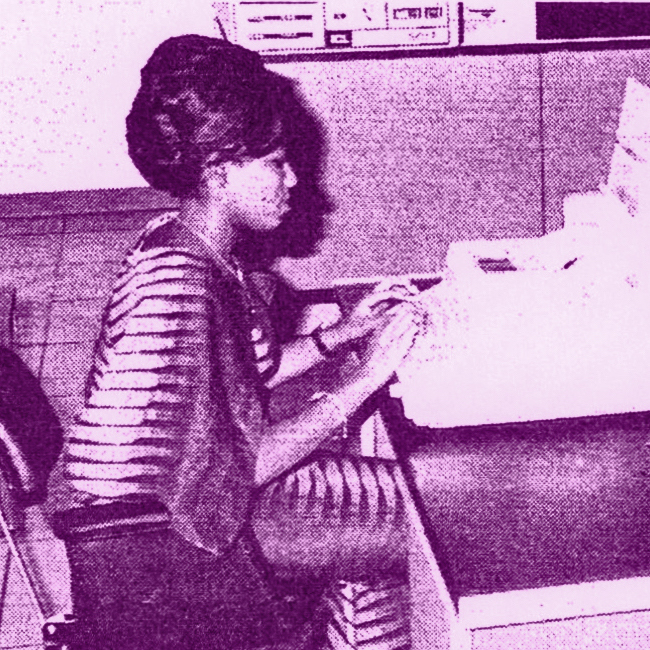 "A Feature, Not a Bug"
SHOT: Technology's Stories (December 2017)
"A Feature, Not a Bug"
SHOT: Technology's Stories (December 2017)
Discrimination in high technology fields, particularly computing, relies on a fiction of meritocracy. This essay explores the history of gender, class, and race-based discrimination as elements that are salient, designed-in features of technological systems. It argues that because such systems are designed to concentrate and wield power, these forms of discrimination are (and have historically been) integral, rather than unintended, unforeseen consequences.
-
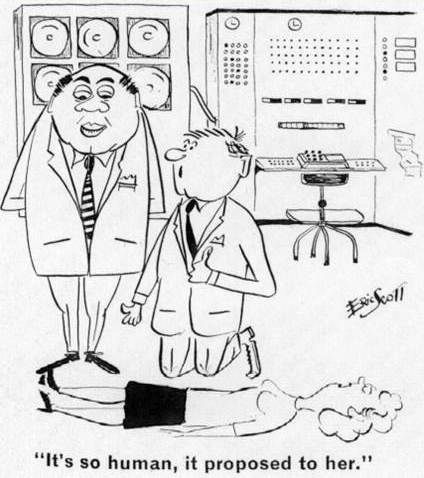 "Computer Love: Replicating Social Order Through Early Computer Dating Systems,"
Ada: A Journal of Gender, New Media, & Technology (Fall 2016, issue 10)
"Computer Love: Replicating Social Order Through Early Computer Dating Systems,"
Ada: A Journal of Gender, New Media, & Technology (Fall 2016, issue 10)
This article rewrites the common "boys and their toys" narrative of the history of computer dating. In it, I establish that the first computer dating service in either the US or the UK was started and run by a woman. The article goes on to discuss why this is little-known, why her contributions have been submerged, and analyzes the ways we write not just the history of computer dating but the history of computing as a whole. I also published a more narrative-driven version of this story in LOGIC Magazine under the title "The Mother of All Swipes," and it made Longreads.com's list of best science and technology articles for 2017. Drafts of this paper were presented at SHOT in Albuquerque in 2015, HSS in Atlanta in 2016, and at Harvard's invitation-only symposium "From Missing Persons to Critical Biography: Reframing Minority Identity in the History of Science, Technology, and Medicine" in Fall 2016. Thanks to all of the discussants at those events for their insightful comments, questions, and advice.
-
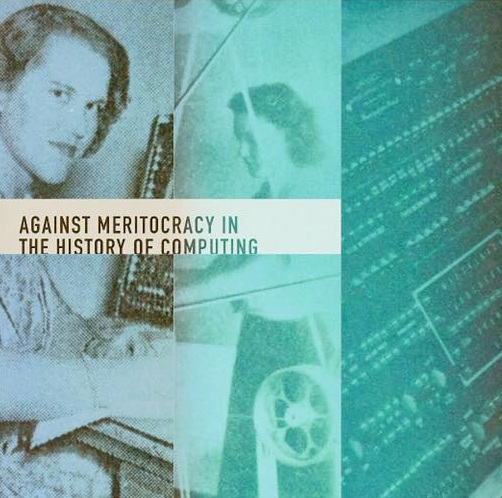 "Against Meritocracy in the History of Computing,"
CORE: The Magazine of the Computer History Museum (2016, starts on p. 28)
"Against Meritocracy in the History of Computing,"
CORE: The Magazine of the Computer History Museum (2016, starts on p. 28)
In this short article for the Computer History Museum's magazine I discuss how the history of computing gives lie to one of our most beloved fictions: the idea of technological meritocracy. I use the history of women in computing to show how the problems we have with underrepresentation in STEM fields can never be solved by simply stuffing more women and minorities into the beginning stages of the STEM "pipeline." For more on this topic, see the work of Amy Slaton (Drexel University), particularly her book, Race, Rigor, and Selectivity in U.S. Engineering: The History of an Occupational Color Line. Slaton shows how engineering education has perpetuated, rather than erased, inequalities of professional and civil life for African Americans that it was somehow supposed to reconfigure.
-
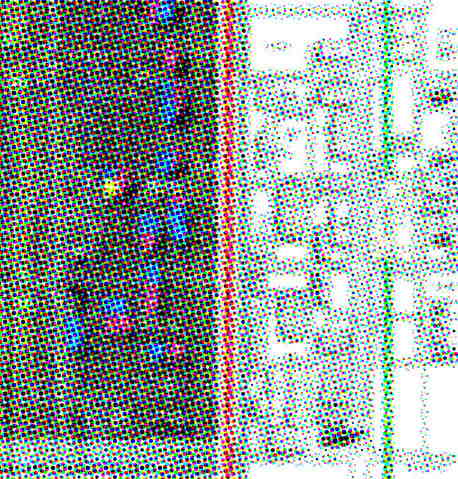 "Using Digital Tools for Classroom Activism:
Exploring Gender, Infrastructure, and Technological Discipline through a Public Bathroom Project,"SYLLABUS Journal
4, no. 2 (2015)
"Using Digital Tools for Classroom Activism:
Exploring Gender, Infrastructure, and Technological Discipline through a Public Bathroom Project,"SYLLABUS Journal
4, no. 2 (2015)
This article is based on a research project undertaken with my undergraduates at Illinois Tech to determine how gendered infrastructure, like bathroom technology, determines how freely people can move about public space and how welcome or unwelcome they feel within certain spaces. The end goal was to show how the values of earlier historical periods get embedded into technologies and infrastructures that determine the patterns of our daily lives in the present--often in ways we do not notice and cannot easily change. The exercises outlined in this article have been adopted and adapted for courses by professors at several other universities, including Northwestern, Bryn Mawr, and Cornell. A draft of this article was presented at SHOT 2013 in Portland, Maine; the Arthur Vining Davis Digital Humanities Workshop at Northwestern in August 2014; and, the "Women's History in the Digital World" conference organized by Monica Mercado at Bryn Mawr in May 2015. To read more about the assignment and its outcomes, and to see a version of the map students created, see this blog post, and also this followup post.
-
"De-Brogramming the History of Computing (Think Piece)," IEEE Annals of the History of Computing (January-March 2013)
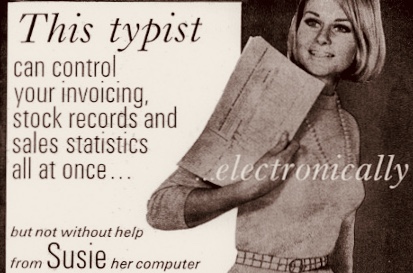
In this short think piece I talk about the fallacy of projecting our obsession with the "boy genius" or "bright young men" onto computing history and using these stereotypes as explanatory. I make the case that gendered and queered views of the history of computing are one important way to see past our focus on only certain historical actors, to get at the subtleties of the field, and to understand how computers really affect our present and future.
-
 "Only the Clothes Changed: Women Operators in British Computing and Advertising, 1950-1970,"
IEEE Annals of the History of Computing 32, no. 2 (October-December 2010)
"Only the Clothes Changed: Women Operators in British Computing and Advertising, 1950-1970,"
IEEE Annals of the History of Computing 32, no. 2 (October-December 2010)
This article shows why women's strength in numbers in early computing work paradoxically hurt their image and status in the field. For more on this topic see chapter 3 of my book Programmed Inequality (MIT Press, 2017) available for through Amazon, independent bookstores, or your campus or local library.
-
 "Meritocracy and Feminization in Conflict: Computerization in the British Government"
"Meritocracy and Feminization in Conflict: Computerization in the British Government"
In Gender Codes: Why Women Are Leaving Computing, ed. Thomas Misa (IEEE-CS Press/Wiley, 2010)Why does the idea of meritocracy pervade how we look at the job market, even in the face of clear evidence that jobs are not gotten through meritocratic means but instead arbitrarily divided along the lines of gender, race, and class? This chapter examines the dynamic of labor feminization in early computing, during a time when women had a very strong presence in the field. It shows how women's high numbers in computing came into conflict with the British government's tightly held ideal of a meritocratic Civil Service. In order to get more men into the field, the government silently, insidiously, and destructively used gender discrimination to undercut the very concept of meritocracy itself. The entire volume of essays can be purchased here.
-
 "Integrating Women at Oxford and Harvard Universities, 1964-1977."
In Yards and Gates: Gender in Harvard and Radcliffe History, ed. Laurel Thatcher Ulrich (New York: Palgrave Macmillan, 2004.)
"Integrating Women at Oxford and Harvard Universities, 1964-1977."
In Yards and Gates: Gender in Harvard and Radcliffe History, ed. Laurel Thatcher Ulrich (New York: Palgrave Macmillan, 2004.)
Based on research done for my undergraduate thesis at Harvard, this chapter examines why truly coeducational initiatives came late to elite universities like Harvard and Oxford, and why, when they did, they actually had negative consequences for the small number of women on each campus. The article discusses why these moves towards further coeducation paradoxically had the effect of hurting the equality of women students, faculty, and administrators at each University. If you'd like to read the rest of the essays in this book, you can purchase it here.
- For more, see my blog or the Digital History Lab that I run at Illinois Tech. I also occasionally contribute blog posts to the Computer History Museum and the Special Interest Group on Computers and Information in Society,a subset of the Society for the History of Technology.

